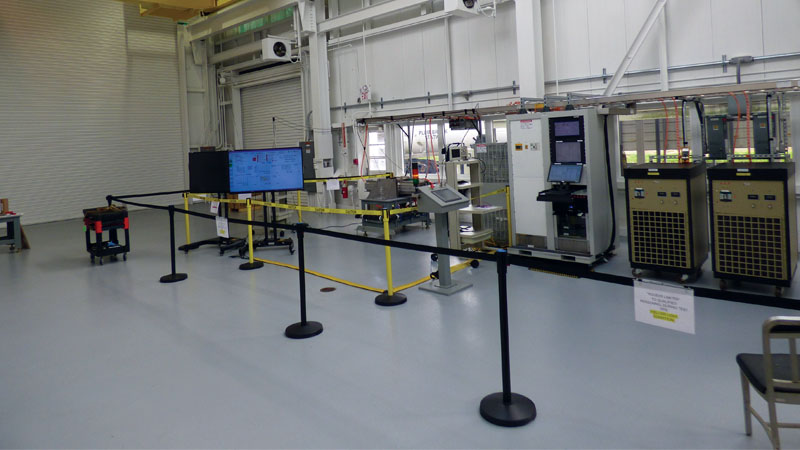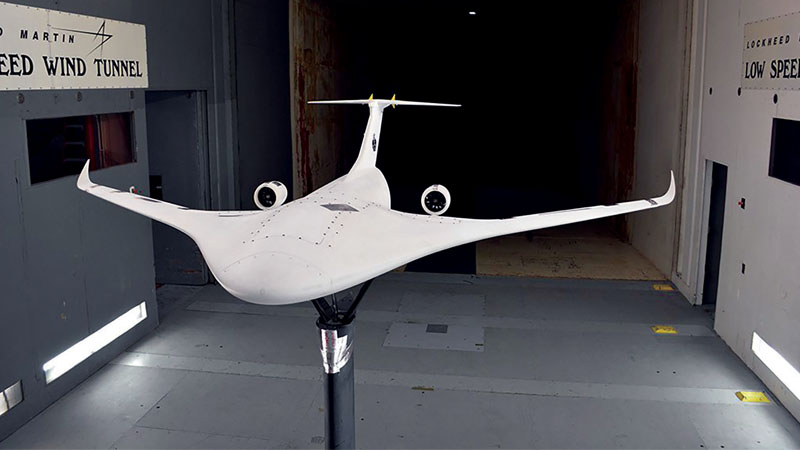Research targets quiet, efficient flight
By NATHAN E. MURRAY|December 2017
The Aeroacoustics Technical Committee addresses the noise produced by the motion of fluids and bodies in the atmosphere and the responses of humans and structures to this noise.
Jet noise reduction technologies for tactical aircraft saw continued refinement in 2017. In January, Embry Riddle Aeronautical University initiated a detailed computational analysis of the “fluidic inserts” concept developed at Pennsylvania State University. The concept enables operational control, allowing noise reduction to be activated during takeoff and deactivated in other flight regimes without a performance penalty.
Also in January, researchers at the University of Mississippi, University of Texas at Austin, and Combustion Research and Flow Technology Inc., or CRAFT Tech, of Pennsylvania began a third-generation refinement of “contoured inserts.” These shaped segments can be installed in the expansion section of a supersonic nozzle as a retrofit jet noise solution for tactical aircraft propulsion. These jet noise reduction activities represent a culmination of scientific refinement through years of detailed study by the academic community. In this regard, Dimitri Papamoschou, a professor at the University of California, Irvine, was awarded the 2017 Aeroacoustics Prize in recognition for his contributions to understanding jet noise generation mechanisms in supersonic jets leading to one of the most promising noise reduction methods in development.
In April, the DGEN Aero-propulsion Research Turbofan, or DART, was installed and operated at NASA Glenn Research Center’s Aero-Acoustic Propulsion Laboratory in Ohio. Researchers used the new system to complete a test of a 3-degree-of-freedom liner in August. DART, a fully mobile system for use in multiple facilities, uses a DGEN380 high-bypass geared turbofan engine produced by Price Induction. NASA engineers will use DART as a test bed to study and develop noise reduction and improved engine performance technologies.
Turning to unmanned air systems, in April, NASA’s Langley Research Center in Virginia completed capability enhancements in the Low-Speed Aeroacoustic Wind Tunnel. This enabled a study between April and August involving simultaneous measurement of aerodynamic performance and acoustics of small, electric propeller and rotor systems applicable to small UAS. Also in April, researchers at the University of Texas at Austin measured the sound produced by multirotor drones during hover and demonstrated how the first and second rotor harmonics correspond to thickness noise and loading noise.
Researchers in the field of bio-inspired aeroacoustics presented results on owl-inspired, low-noise airfoils with applications ranging from small UAS to the largest wind turbine rotors. Specifically, in December 2016, the research team of Lehigh University, Virginia Tech, Florida Atlantic University and the University of Cambridge in Britain published findings on the reduction of roughness noise. In January, Iowa State University and Virginia Tech presented results on application-specific leading edge serrations, similar to those on owl wings, for the reduction of broadband propeller noise.
The Phased Array Benchmarking working group led by Langley concluded its third year with international engagement from industry, government and academic partners. Steady progress has produced a set of benchmark datasets useful for testing and comparison of various phased array data analysis approaches.
The Kevlar-walled test section, a concept Virginia Tech developed, this year saw application in a wider set of facilities. In February, Virginia Tech demonstrated the technique on a trailing edge noise test. Ballistic Kevlar cloth is used to separate the test section flow from an adjacent anechoic chamber where acoustic instrumentation is placed.
These acoustically transparent walls eliminate the need for a collector, allow for a longer test section to better isolate the sound of interest, and greatly increase the quality and predictability of the flow. Several facilities are demonstrating this capability in their own facilities this year, including the 2-by-3-meter Danish National Wind Tunnel, the 1-by-1-meter wind tunnel at Beijing University of Aeronautics and Astronautics, and the Quiet Flow Facility at Langley.
Contributors: Clifford A. Brown, Dennis K. McLaughlin, Philip J. Morris, Tasos S. Lyrintzis, Nikolas S. Zawodny, Charles E. Tinney and William Devenport



































